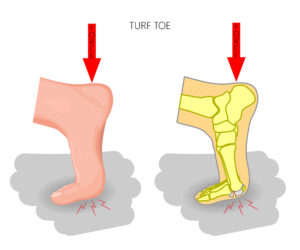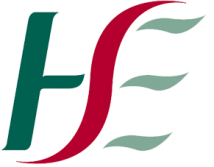How to Tackle Turf Toe

Blathnaid Cawley is a Sports Podiatrist at Mary Moore Podiatry

If you require our assistance with protecting your active feet please BOOK ONLINE , or call us on 018623866, or else email, info@marymoorepodiatry.ie
What a win last Saturday I was on the edge of my seat both as a huge Irish Rugby fan and also as a Sports Podiatrist hoping there would be no injuries like the previous game against Scotland!!!! In light of Ireland’s big win on Saturday, I thought this would be a good blog topic as it is an injury I treat regularly in the clinic across footballers, hockey players, and even volleyball.
In physical high-speed sports like rugby, accidents are more likely to occur, including the risk of spraining your big toe. Turf toe may not sound like much, but it can keep you out of the game. Man of the match, Dan Sheehan, is a good example of someone who may be prone to this injury given his positioning in the scrum. Continue reading to see why. Turf toe, in its simplest form, is a sprain-related injury. Both the ligaments and/or joint capsule of the plantar surface of the big toe joint can be involved in this injury. This condition is commonly seen in football, soccer, and rugby players. It can also occur in those exercising on a hard or artificial surface.
(Coughlin et al. 2010)
How does it occur?
It occurs when the foot is fixed to the ground, resulting in hyper- or over-extension of the big toe joint and an external force applied to the back of the foot or heel. It can also occur during push-off maneuvers, like rugby players in a scrum or runners pushing off from a starting block. This then results in the attenuation of the plantar capsular ligamentous complex that supports the big toe joint.
(Tran et al. 2019)
How does this condition present itself?
At Mary Moore Podiatry, we will conduct a thorough history and examination for the right clue for this diagnosis. 
- Performing activity/ exercise on an artificial or hard surface.
- Sustaining a compressive load on the heel while your big toe was hyper- or over-extended.
- Pain, stiffness, and swelling around the big toe joint.
- Weakness when pushing off the joint.
- A popping noise or abnormal sensation at the time of injury.
- Reduced strength and range in flexion at the joint.
(Najefi et al. 2018)
Luckily, this condition is treatable. The rehab for turf toe will place an emphasis on reducing symptoms and restoring function. We will help find the appropriate starting point for you, allowing you to move in the right direction as tolerance improves and symptoms are reduced. Rehab we delivers includes
Rest – depending on the severity, you may need to take a break from sports and activities. Your podiatrist will discuss this rest period with you and tailor it to the severity of the condition and your needs. Low impact exercise like cycling and elliptical training can be carried out once symptoms aren’t experienced.
Elevation – this is a very useful way to reduce swelling and inflammation symptoms.
Stabilisation – taping methods can be applied to help restrict over-flexion or over-extension of the joint, helping to reduce pain and aiding the healing process.
Exercises – exercises may be prescribed depending on your ability to perform them during your appointment, some of these may include improving calf strength, balancing work, joint mobilisation techniques, and active flexion of the big toe.
Orthotics – in addition to a stiff soled shoe, we may recommend custom or off the shelf orthotics. These will help provide support and relief. Orthotics can be very beneficial for a number of foot related problems like turf toe, plantar fasciitis, or fat pad atrophy.
Soft Tissue Laser – this is a non-invasive laser therapy that promotes tissue repair and can be done in conjunction with acupuncture. This very effective in the acute early phase of ths injury.
Imaging – to evaluate the severity or if there has been bone or severe soft tissue disruption.
Surgery – more severe cases might require surgery where a complete plantar plate disruption has occurred or where there is disruption to on or both sesamoid bones.
(Cougnlin et al. 2010, Najefi et al. 2018, and Tran et al. 2019)
If you think you are suffering from some of the symptoms listed above, please get in touch with our practice manager or book online directly to see Blathnaid, Michael or Mary..
Book an appointment with us today by clicking here.
References
Coastal Podiatry (2021). Sports injuries of the feet and ankles. Available at: https://crystalcoastpodiatry.com/wp-content/uploads/2021/09/AdobeStock_243824891-scaled.jpeg Accessed on: 20/03/2023.
Coughlin, M. J., Kemp, T. J., & Hirose, C. B. (2010). Turf toe: soft tissue and osteocartilaginous injury to the first metatarsophalangeal joint. The Physician and sportsmedicine. Available at: https://doi.org/10.3810/psm.2010.04.1766. Accessed on 20/03/2023.
Najefi, A. A., Jeyaseelan, L., & Welck, M. (2018). Turf toe: A clinical update. EFORT open reviews. Available at: https://doi.org/10.1302/2058-5241.3.180012. Accessed on: 20/03/2023.
Tran, A., Kappa, J., Smith, E., Hoy, M., Farrar, J., Chandran, A., & Pandarinath, R. (2019). The Effect of Turf Toe Injuries on Player Performance in the National Football League. The Iowa orthopaedic journal, 39(2), 35–39. Available at:https://www.ncbi.nlm.nih.gov/pmc/articles/PMC7047292/ Accessed on: 20/03/2023.




